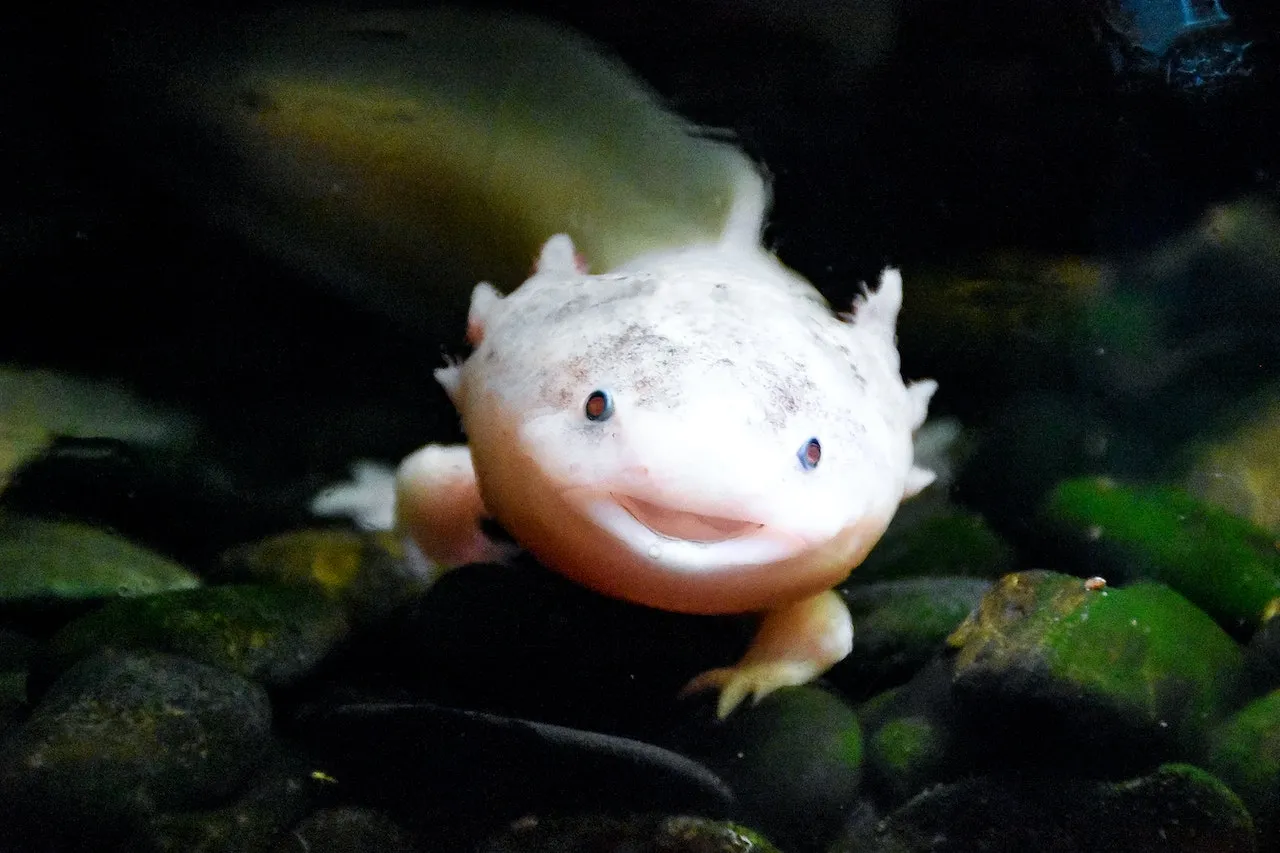Why Are Axolotls Illegal In California?
With their unique, alien-like appearance and intelligent nature, axolotls have become a popular exotic pet. However, these amphibians native to Mexico are actually illegal to own in the state of California. If you’re wondering why such a cute critter is banned in the Golden State, here’s a quick overview.
Axolotls are Not Native to California
Axolotls, also known as Mexican walking fish, are amphibians native to the lakes of Mexico City. They have become popular pets around the world due to their unique appearance and ability to regenerate body parts.
However, one place where you won’t find axolotls is California, and there’s a good reason for that.
Ecological Concerns
One of the main reasons why axolotls are illegal in California is because they pose a threat to the local ecosystems. Axolotls are voracious predators and can easily disrupt the delicate balance of native species in the area.
They have the potential to outcompete and prey upon native amphibians, fish, and invertebrates, leading to a decline in biodiversity. The California Department of Fish and Wildlife has taken measures to prevent the introduction of non-native species that could harm the state’s natural habitats.
Invasive Species Regulations
California has strict regulations in place to prevent the introduction and spread of invasive species. These regulations are aimed at protecting the state’s unique and diverse ecosystems. The import, possession, and sale of axolotls are prohibited under the California Code of Regulations, Title 14, Section 671.
Importing axolotls into the state without proper permits can result in fines and legal consequences.
It’s important to note that the ban on axolotls is not limited to California. Several other states in the United States, as well as countries around the world, have similar restrictions on the possession and trade of non-native species.
These regulations are in place to prevent the unintentional introduction of invasive species and the potential harm they can cause to the environment.
Conservation Efforts
While axolotls may not be allowed as pets in California, there are ongoing efforts to protect and conserve their natural habitat in Mexico. The axolotl population has been declining in recent years due to pollution, habitat destruction, and the introduction of non-native species in their native lakes.
Conservation organizations, such as the Axolotl Conservation Network, are working to raise awareness about the importance of preserving the axolotl’s unique genetic diversity and their role in the ecosystem.
Risk of Becoming an Invasive Species
One of the main reasons why axolotls are illegal in California is due to the risk of them becoming an invasive species. Axolotls are native to Mexico and are not found in the wild in California. If they were to be introduced into the local ecosystems, they could potentially disrupt the balance of the native flora and fauna.
When an introduced species becomes invasive, it means that it can reproduce, spread rapidly, and outcompete native species for resources. This can have detrimental effects on the ecosystem, including the loss of biodiversity and the disruption of food chains.
California is known for its diverse ecosystems, including wetlands and freshwater habitats, which are particularly vulnerable to invasive species. The state has strict regulations in place to prevent the introduction of non-native species that could potentially harm the environment.
By prohibiting the ownership and sale of axolotls, California aims to prevent the accidental release or escape of these amphibians into the wild. This proactive approach helps protect the state’s delicate ecosystems and ensures the preservation of native species.
Examples of Invasive Species
There have been numerous examples of invasive species causing significant damage to ecosystems around the world. One well-known example is the cane toad in Australia. Originally introduced to control agricultural pests, the cane toad population exploded, leading to the decline of native species and ecological imbalances.
Another example is the lionfish in the Atlantic Ocean. Native to the Indo-Pacific region, lionfish were accidentally introduced into the Atlantic, likely through the release of aquarium pets. They have since become a major threat to coral reefs and native fish populations.
How Invasive Species Spread
Invasive species can spread through various means, including human activities and natural dispersal. Some common pathways for introduction include:
- Intentional release by pet owners or aquarium enthusiasts
- Accidental escape from captivity
- Ballast water discharge from ships
- Importation of goods and produce
Once introduced, invasive species can rapidly reproduce and disperse, taking advantage of new habitats and outcompeting native species. This is why it is crucial to have strict regulations in place to prevent the introduction and spread of potentially harmful non-native species.
If you are interested in learning more about invasive species and their impact, you can visit the Invasive Species Information Center for comprehensive resources and information.
Disease Transmission Concerns
One of the main reasons why axolotls are illegal in California is due to concerns about disease transmission. Axolotls are susceptible to certain diseases that can be transmitted to other aquatic species.
The California Department of Fish and Wildlife has placed restrictions on the import and possession of axolotls in order to prevent the spread of these diseases to native wildlife populations.
One of the diseases that axolotls can carry is called chytridiomycosis, which is caused by a fungus called Batrachochytrium dendrobatidis. This fungus has been responsible for devastating amphibian populations around the world, and there is a concern that axolotls could act as carriers of the disease and potentially spread it to native amphibians in California.
In addition to chytridiomycosis, axolotls can also carry other diseases such as red-leg disease, which is caused by the bacteria Aeromonas hydrophila. This disease can cause skin lesions, ulcers, and even death in amphibians.
By restricting the import and possession of axolotls, California is taking proactive measures to protect its native amphibian species from these potential disease threats.
While there is no evidence that axolotls have actually transmitted diseases to native amphibians in California, the potential risk is enough for the state to take action. The California Department of Fish and Wildlife regularly monitors and assesses the potential impact of non-native species on the state’s ecosystems, and has determined that the import and possession of axolotls poses a significant risk to native wildlife.
It is important to note that these restrictions are in place to protect the biodiversity and ecological balance of California’s aquatic habitats. The state has a rich variety of amphibians, including several endangered and threatened species, and it is crucial to maintain their health and sustainability.
By preventing the introduction of potentially harmful diseases, California is working to preserve its natural heritage.
For more information on the regulations regarding axolotls in California, you can visit the official website of the California Department of Fish and Wildlife (https://www.wildlife.ca.gov/).
Strict California Exotic Pet Laws
California is known for its strict regulations when it comes to exotic pets. One such example is the ban on owning axolotls, a fascinating species of aquatic salamanders. These laws are in place to protect the environment and prevent the introduction of non-native species that could potentially harm native wildlife.
Understanding the Concerns
The California Department of Fish and Wildlife has classified axolotls as a “wildlife species” under the California Code of Regulations. This classification means that they are protected, and it is illegal to possess, import, transport, or release them into the wild without a valid permit.
The main concern behind the ban is the potential impact axolotls could have on California’s delicate ecosystems. Axolotls are native to the lakes and canals of Mexico, and introducing them into California could disrupt the balance of native species and threaten biodiversity.
Protecting Native Species
California is home to a diverse range of native species, many of which are already facing threats from habitat loss, pollution, and climate change. The introduction of non-native species can exacerbate these issues by competing for resources, preying on local wildlife, or spreading diseases.
By enforcing strict exotic pet laws, California aims to minimize the risks associated with introducing non-native species into the state. While axolotls may seem harmless and even charming, their potential impact on the environment outweighs any potential benefits of owning them as pets.
Alternative Options
For those who are interested in owning unique and exotic pets, California offers a wide range of options that are legal and do not pose a threat to native wildlife. From reptiles to birds and small mammals, there are many fascinating species that can be kept as pets without violating any laws.
It is important for prospective pet owners to do their research and ensure that the species they choose is legal and suitable for their circumstances. Local pet stores, breeders, and animal welfare organizations can provide valuable information on legal options and responsible pet ownership.
For more information on California’s exotic pet laws and the reasons behind them, visit the California Department of Fish and Wildlife’s website: www.wildlife.ca.gov.
Availability from Illicit Pet Trade
One of the main reasons why axolotls are illegal in California is due to their availability from the illicit pet trade. Axolotls, also known as Mexican walking fish, are highly sought after for their unique appearance and fascinating ability to regrow lost body parts.
However, their popularity has led to illegal smuggling and trafficking of these amphibians.
The illicit pet trade involves the illegal capture, breeding, and selling of animals, often for exotic pet enthusiasts who are willing to pay a high price for rare and unusual species. Unfortunately, this underground market has contributed to the decline of many animal species and is a significant threat to their survival in the wild.
Environmental Impact
The availability of axolotls from the illicit pet trade poses a significant environmental impact. When these amphibians are taken from their natural habitat, it disrupts the delicate balance of ecosystems they inhabit.
Axolotls play a crucial role in maintaining the health of their aquatic environments by controlling populations of insects, small fish, and other invertebrates.
Removing axolotls from their natural habitat can lead to imbalances in the ecosystem, potentially causing negative consequences such as overpopulation of certain species or the decline of others. This disruption can have far-reaching effects on the overall biodiversity and stability of aquatic ecosystems.
It is essential to protect these unique creatures and preserve their natural habitats.
Conservation Efforts
To combat the availability of axolotls from the illicit pet trade, conservation efforts are being made to protect these amphibians and their habitats. Organizations such as the Mexican Axolotl Conservation Program are working to raise awareness about the importance of conserving axolotls and their natural environment.
Conservation efforts include implementing stricter regulations and enforcement against the illegal pet trade, promoting responsible pet ownership, and supporting research and breeding programs to ensure the survival of axolotls in captivity.
These initiatives aim to reduce the demand for wild-caught axolotls and provide alternatives for those who wish to own them legally.
Furthermore, educational campaigns are being conducted to inform the public about the ecological significance of axolotls and the consequences of their illegal trade. By raising awareness and promoting ethical practices, these initiatives hope to protect axolotls and other vulnerable species from exploitation.
For more information on axolotl conservation efforts, you can visit the Mexican Axolotl Conservation Program website.
Conclusion
While their cute faces have captured the hearts of exotic pet lovers, axolotls are banned in California due to concerns over invasiveness, disease transmission, and illegal pet trade. The state takes its exotic pet laws very seriously to protect native wildlife. There are plenty of legal aquatic animals though for those hoping to add a unique amphibious pet to their home.








